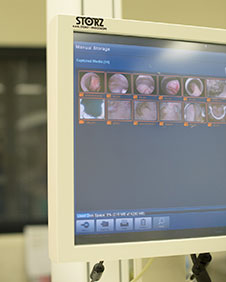Introduction

Endometrial resection is the surgical procedure of permanently removing the inner lining of the uterus (endometrium). It is performed as an alternative to a hysterectomy for a heavy period. The endometrium is the lining of the womb that grows and is shed each month as the menstrual period.
As it is a relatively a minor procedure, with a high success rate, it is an attractive option for women who wish to avoid a major surgery, or at high risk for major surgery. An added benefit is a marked reduction in symptoms of Premenstrual Tension, and a significant reduction of period pain.
The procedure is performed with a telescope inserted through the vagina and the neck of the womb. The inside of the womb is inspected (hysteroscopic examination) for any abnormality. Minor pathology (e.g. polyps or fibroids) may be removed at the same time.
The endometrium is then resected in strips with a portion of the muscle that contains the deep layer (basal layer) of the endometrial glands. It is essential to remove the basal layer of the glands to prevent regrowth of the endometrium. This tissue is sent for histological examination.
The menstrual period will either stop completely or become very much lighter. If other pathology is present, however, the procedure may not work.
Preoperative preparation
Some patients may require medication to thin the lining of the womb in order to make the operation easier and safer. You will be informed if this is necessary.
There is no need to shave.
The patient must not eat or drink for at least 6 hours preoperatively, as the procedure is usually performed under general anaesthesia.
Admission to hospital is on the morning of surgery.
Postoperatively
There are no incisions and hence sutures are not used.
A bladder catheter is usually not required.
On rare occasions, a balloon catheter is left in the uterus for a few hours to assist in the control of bleeding.
The patient is usually discharged from hospital about 4 – 6 hours post-surgery.
There is minimal pain (similar to period pain) which is usually controlled with simple pain tablets.
Vaginal bleeding may occur, but will decrease progressively over the next 2 -3 weeks. A blood stained discharge may occur for a week or two thereafter.
Patients may resume work within one week.
Intercourse should be avoided until the blood stained discharge stops (approx. 4 weeks)
Long term effects
Approximately 40% of patients will have no further periods.
Another 40% of patient’s will have very light periods.
Ovarian function is not affected; hence there is no need for hormone therapy.
Although endometrial resection will generally result in infertility, this cannot be guaranteed and the patient should use some form of contraception. An ideal option is a sterilization procedure at the time of endometrial resection. The operation is therefore not suitable for women who want more children.
Complications
Complication rates are low in the hands of an experienced surgeon. As with any surgery, the patient is exposed to anaesthetic complications, haemorrhage (bleeding), trauma to adjacent organs, and infection.
Specific complications are extremely rare, namely trauma or diathermy injury to surrounding organs, and fluid overload.
Follow up
A follow up appointment in a week is necessary to check that there are no post-operative complications. The operative procedure and histology will be discussed at this appointment.

